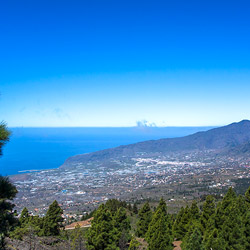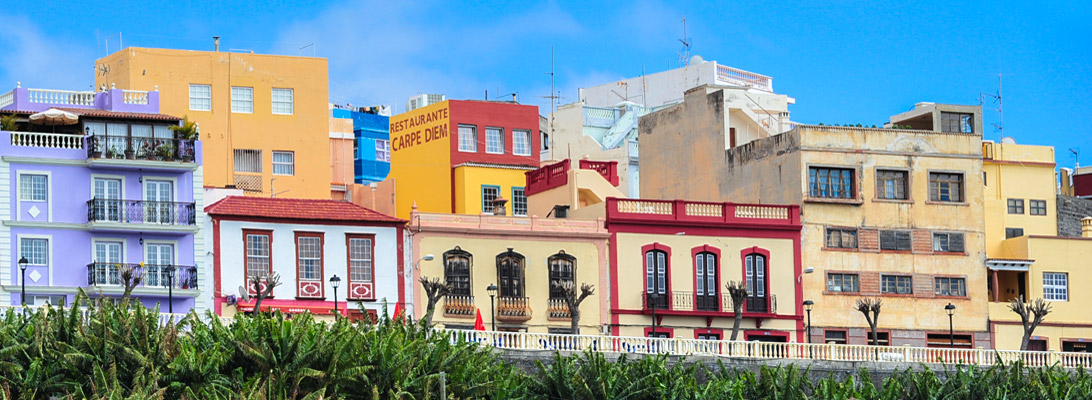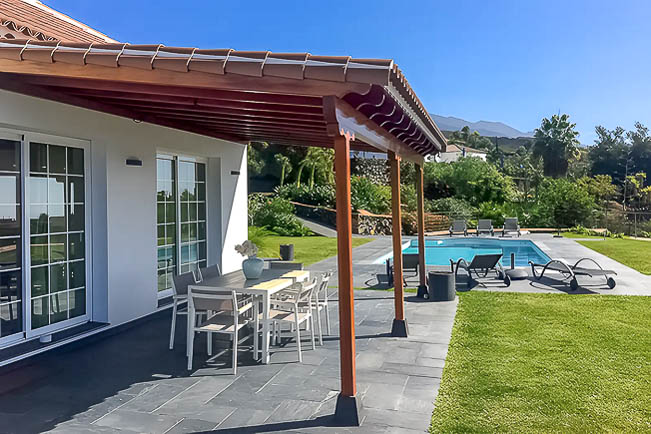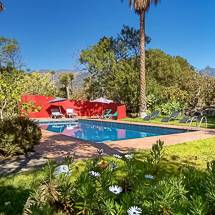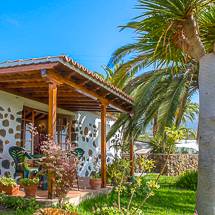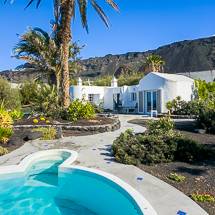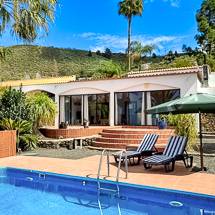La Palma's southwest is spoiled by the sun - from Las Indias via Puerto Naos and Los Llanos to Tazacorte and Puerto de Tazacorte, the last stop before the rugged north coast. The slopes of the Cumbre mostly keep out trade wind clouds, wind and rain, and the fertile Aridane valley (Valle de Aridane) is spoiled by sun and light in abundance.
Holiday homes in the Aridane valley
No wonder that this is the most popular location for holiday homes and apartments on La Palma. In Puerto Naos or Charco Azul, in La Laguna, Las Manchas, Las Norias, Tajuya, Todoque, Puerto de Tazacorte or La Punta you can dream, sunbathe and enjoy beautiful houses in a quiet area. But also in Los Llanos and El Paso, you can get plenty of sun in the healthy climate of La Palma - and both towns have kept their tranquillity. The beaches on the southwest coast mostly show moderate surf and are even partially (like the one of Puerto de Tazacorte) protected.
Valle de Aridane - a flowering garden
The Aridane valley touches the regions of the municipalities of Los Llanos, El Paso, and Tazacorte. Despite the banana plantations, the Aridane Valley is considered one of the most beautiful landscapes in the Canary Islands. At El Paso, it is characterized by the wonderful almond trees in bloom, which contrast beautifully with the green of the spicy pine forests higher up. Avocados and pineapples also thrive in the Aridane valley under ideal conditions. In the past, La Palma's export products, which were in great demand due to the abundance of sunshine, sufficient humidity, and little wind, were grown here: from sugar cane, mulberry trees and prickly pears to wine and tobacco. In the gardens and around the fincas, flowers, fruits, and vegetables grow for personal use as in a Garden of Eden.
Preferred place of residence already with the Guanches
In the north, the Aridane valley is bordered by the peak of Time, in the south by the lava fields of the volcano San Juan and in the east by the Cumbre. The name "Aridane" meant for the Guanchen "goat plain" and was preferentially populated because it was excellently suited for cattle breeding as well as for the cultivation of crops.








